Abstract
The role of carotenoids in quenching of chlorophyll fluorescence in the major light-harvesting complex of photosystem II has been studied with a view to understanding the molecular basis of the control of photoprotective nonradiative energy dissipation by the xanthophyll cycle in vivo. The control of chlorophyll fluorescence quenching in the isolated complex has been investigated in terms of the number of the conjugated double bonds for a series of carotenoids ranging from n = 5-19, giving an estimated first excited singlet state energy from 20,700 cm-1 to 10,120 cm-1. At pH 7.8 the addition of exogenous carotenoids with >=10 conjugated double bonds (including zeaxanthin) stimulated fluorescence quenching relative to the control with no added carotenoid, whereas those with n </= 9 conjugated double bonds (e.g., violaxanthin) had no effect on fluorescence. When quenching in the light-harvesting complex of photosystem II was induced by a lowering of pH to 5.5, carotenoids with n </= 9 conjugated double bonds (including violaxanthin) caused a noticeable inhibition of fluorescence quenching relative to the control. Of the 10 carotenoids tested, quenching induced by the addition of the tertiary amine compound, dibucaine, to isolated light-harvesting complex of photosystem II could only be reversed by violaxanthin. These results are discussed in terms of the two theories developed to explain the role of zeaxanthin and violaxanthin in nonphotochemical quenching of chlorophyll fluorescence.
Full text
PDF
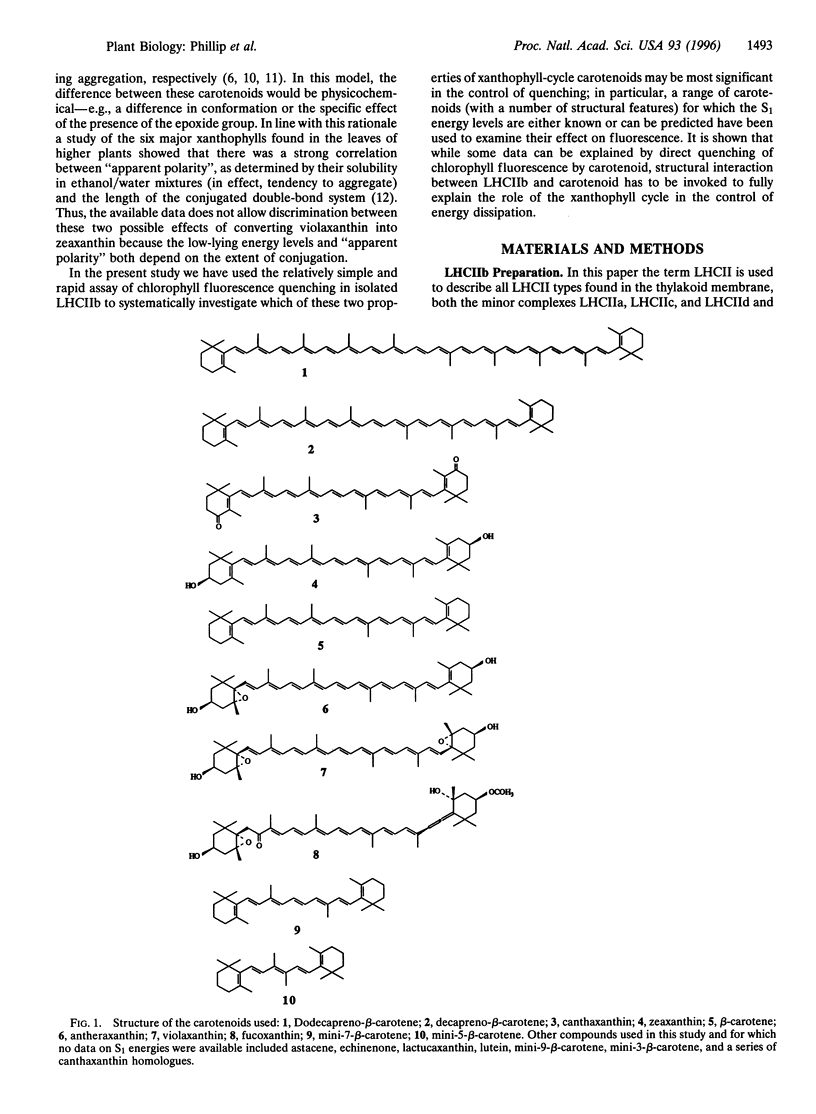
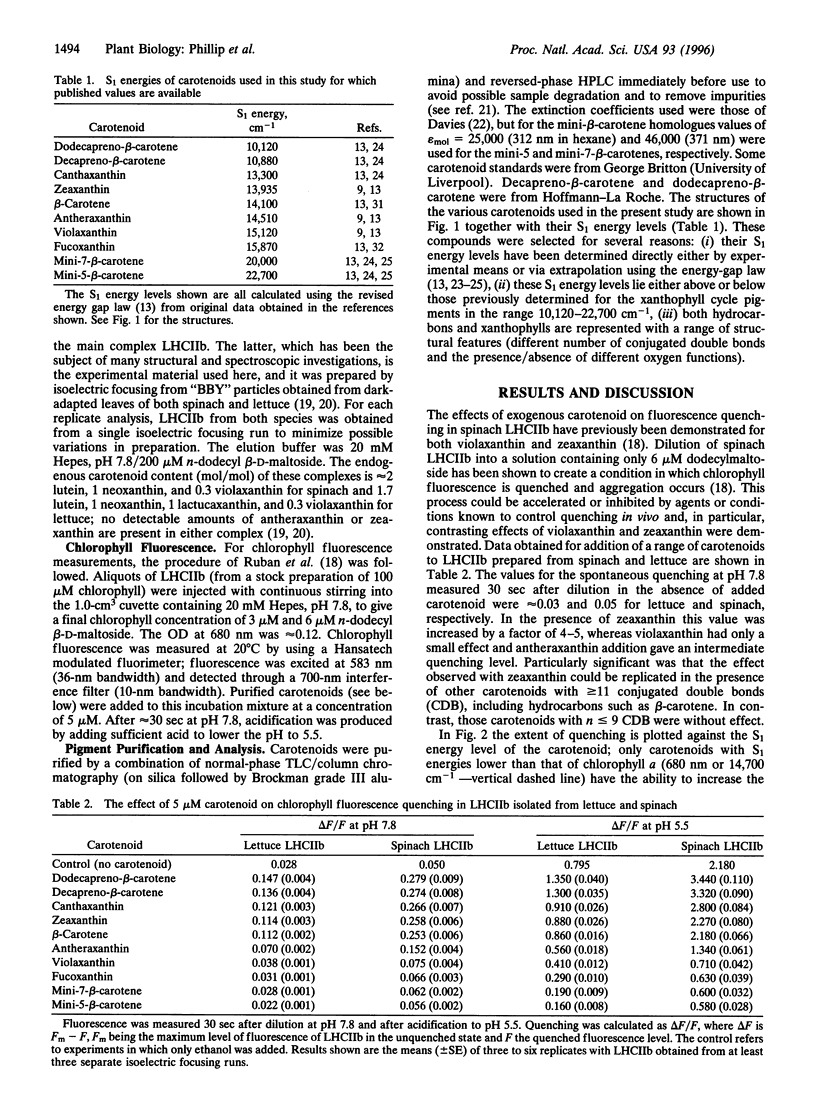
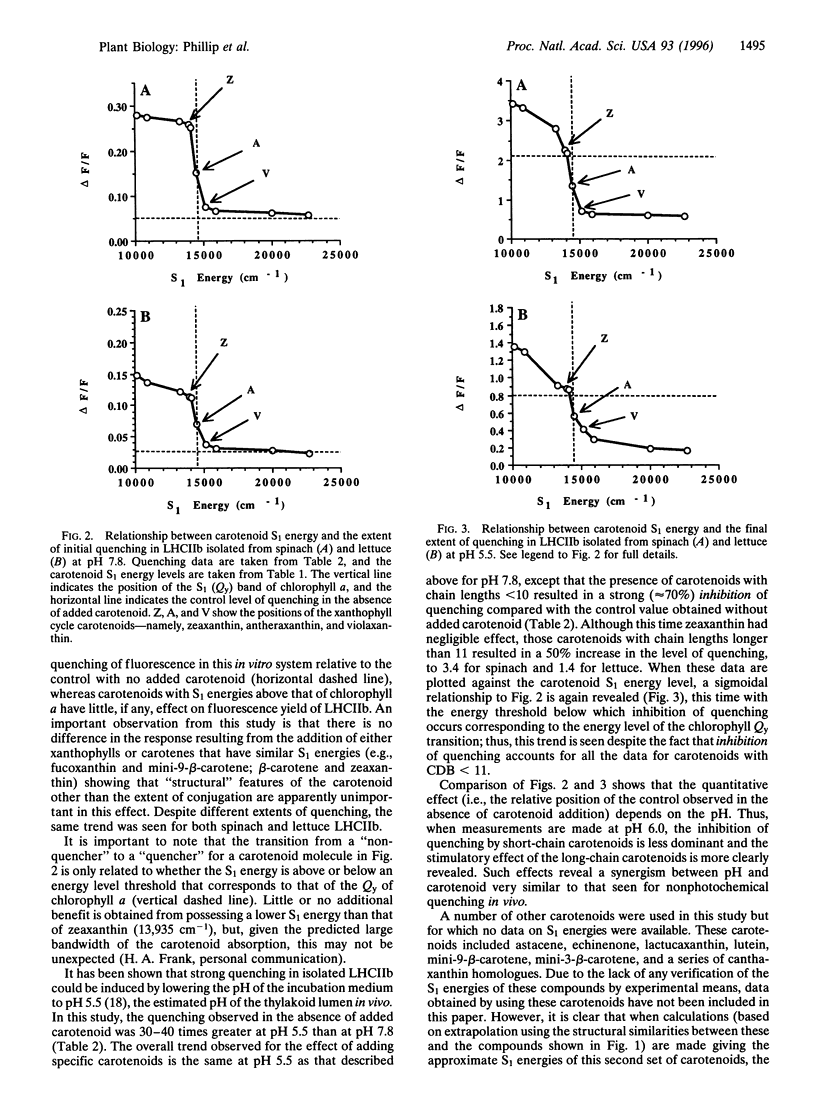
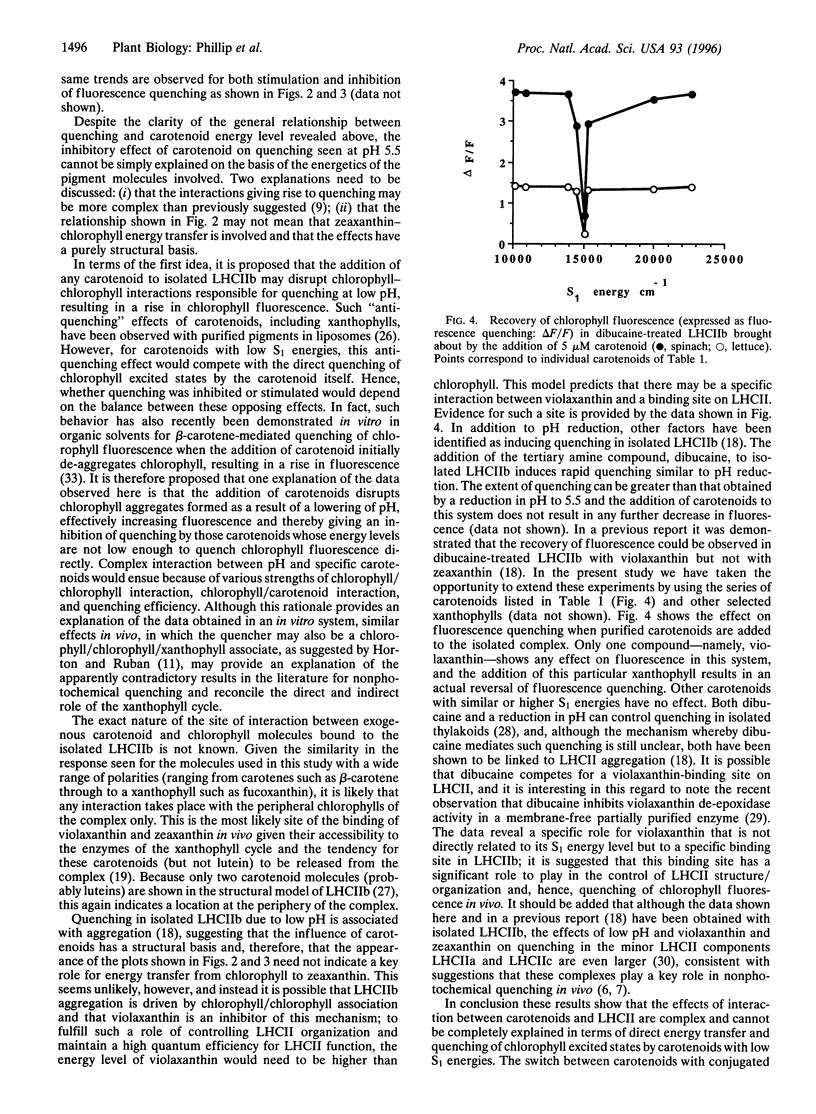
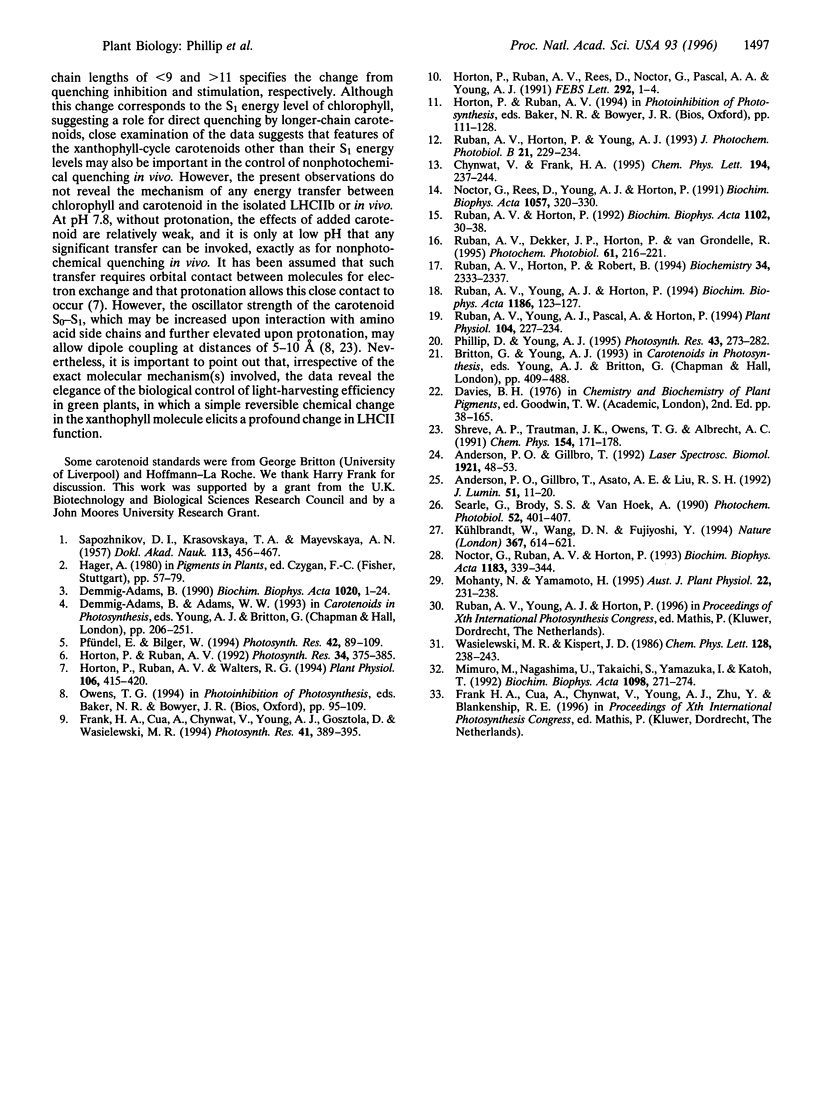
Selected References
These references are in PubMed. This may not be the complete list of references from this article.
- Horton P., Ruban A. V., Rees D., Pascal A. A., Noctor G., Young A. J. Control of the light-harvesting function of chloroplast membranes by aggregation of the LHCII chlorophyll-protein complex. FEBS Lett. 1991 Nov 4;292(1-2):1–4. doi: 10.1016/0014-5793(91)80819-o. [DOI] [PubMed] [Google Scholar]
- Horton P., Ruban A. V., Walters R. G. Regulation of Light Harvesting in Green Plants (Indication by Nonphotochemical Quenching of Chlorophyll Fluorescence). Plant Physiol. 1994 Oct;106(2):415–420. doi: 10.1104/pp.106.2.415. [DOI] [PMC free article] [PubMed] [Google Scholar]
- Kühlbrandt W., Wang D. N., Fujiyoshi Y. Atomic model of plant light-harvesting complex by electron crystallography. Nature. 1994 Feb 17;367(6464):614–621. doi: 10.1038/367614a0. [DOI] [PubMed] [Google Scholar]
- Ruban A. V., Horton P., Robert B. Resonance Raman spectroscopy of the photosystem II light-harvesting complex of green plants: a comparison of trimeric and aggregated states. Biochemistry. 1995 Feb 21;34(7):2333–2337. doi: 10.1021/bi00007a029. [DOI] [PubMed] [Google Scholar]
- Ruban A. V., Young A. J., Pascal A. A., Horton P. The Effects of Illumination on the Xanthophyll Composition of the Photosystem II Light-Harvesting Complexes of Spinach Thylakoid Membranes. Plant Physiol. 1994 Jan;104(1):227–234. doi: 10.1104/pp.104.1.227. [DOI] [PMC free article] [PubMed] [Google Scholar]


